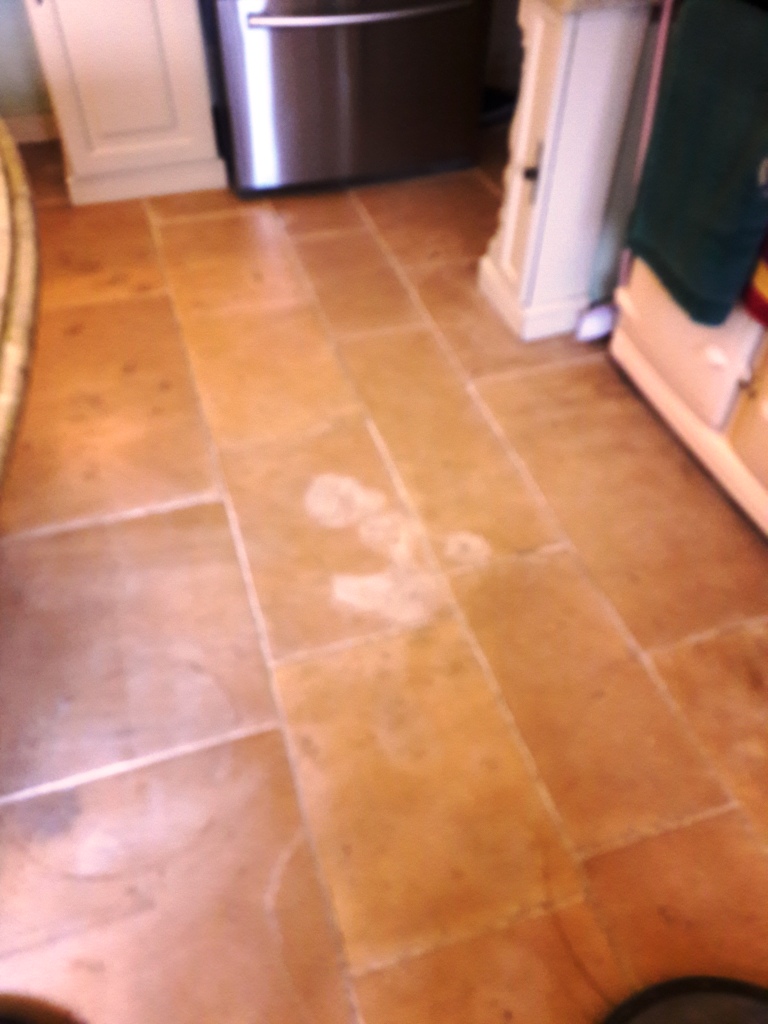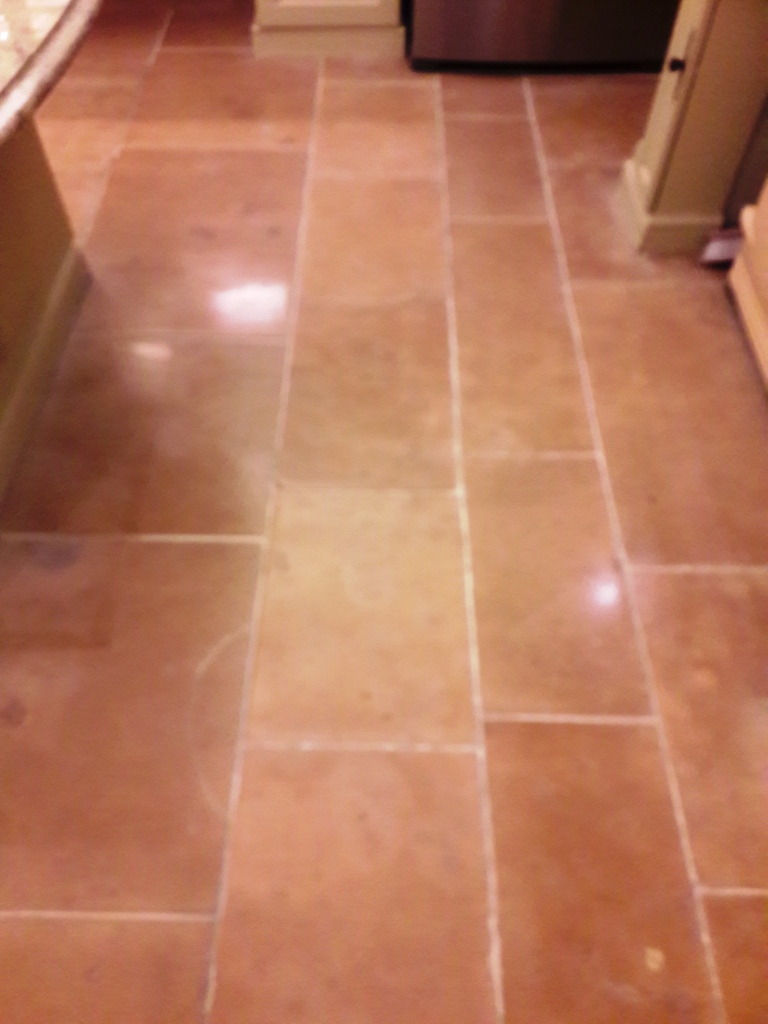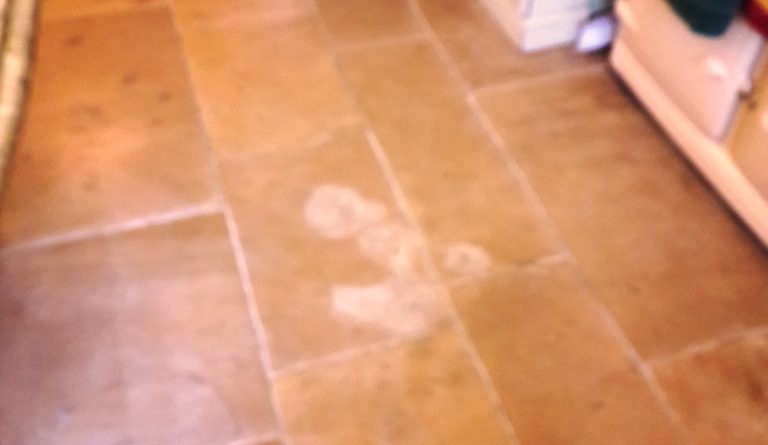Restoring the Appearance of Bleach Damaged Limestone Tiles in a Staffordshire Kitchen
First of all apologies for the quality of the photographs on this page, I clearly need to work on my photography skills. Normally photographs like these wouldn’t make the website site however they did capture the stain quite well so I thought they would be worth including. The customer who lives at a large house near Tutbury had a spillage on the lovely Limestone floor tiles in her kitchen which she tried to clean with different chemicals including bleach which just made the problem worse.
The trouble with bleach is it’s a strong acid which will eat through the sealer on your stone tiles, which in this case resulted in whitish circles you can see in the middle of the photograph below.

The tiles were overdue a deep clean anyway so the owner called me in to renovate the floor and hopefully remove the staining.
Removing Staining from Limestone Tiled Floor
I started the process by giving the floor an initial clean with Tile Doctor Pro-Clean which is a strong alkaline tile cleaning product. This wouldn’t address the staining problem but my intention was to get the grout clean and also remove any surface dirt and grit from the floor. The cleaning solution was scrubbed in and then rinsed off with water which was then extracted using a wet vacuum.
The best method for restoring the appearance of Limestone floor tiles requires stripping back the surface of the tile and then building back the polish of the stone using a process we call burnishing. To do this we use a set of diamond encrusted pads which come in different grades from coarse to very fine. The pads are applied using a floor buffer machine and each pad does a different job and you start with the course red pad together with a little water and then carry on with the white, then yellow pad again using a little water removing the soiled water along the way.
Although the floor now looked great the bleach had done more damage than first anticipated and had stripped the stone of its natural oils where the spillage had been. To rectify this I applied Tile Doctor Stone Oil to the floor which I’m happy to say resolved the problem.
Sealing Limestone Tiles
Once the Stone Oil has soaked in I followed up with the application of Tile Doctor Colour Grow which is a specially designed stone sealer that penetrates into the pores of the stone protecting it from within whilst enhancing the deep natural colours in the stone. The floor was then left for about one hour to dry before working in Tile Doctor Shine powder with a white buffing pad to give a really deep robust finish.

The floor was transformed after I had finished and before leaving I made sure to advise the owner on the correct way to maintain her floor in future.
Source: Limestone Tile Cleaning and Renovation Service in Tutbury, Staffordshire
